New paper “Color semantics in human cognition,” was published in Current Directions in Psychological Science.
AUthor: Karen B. Schloss
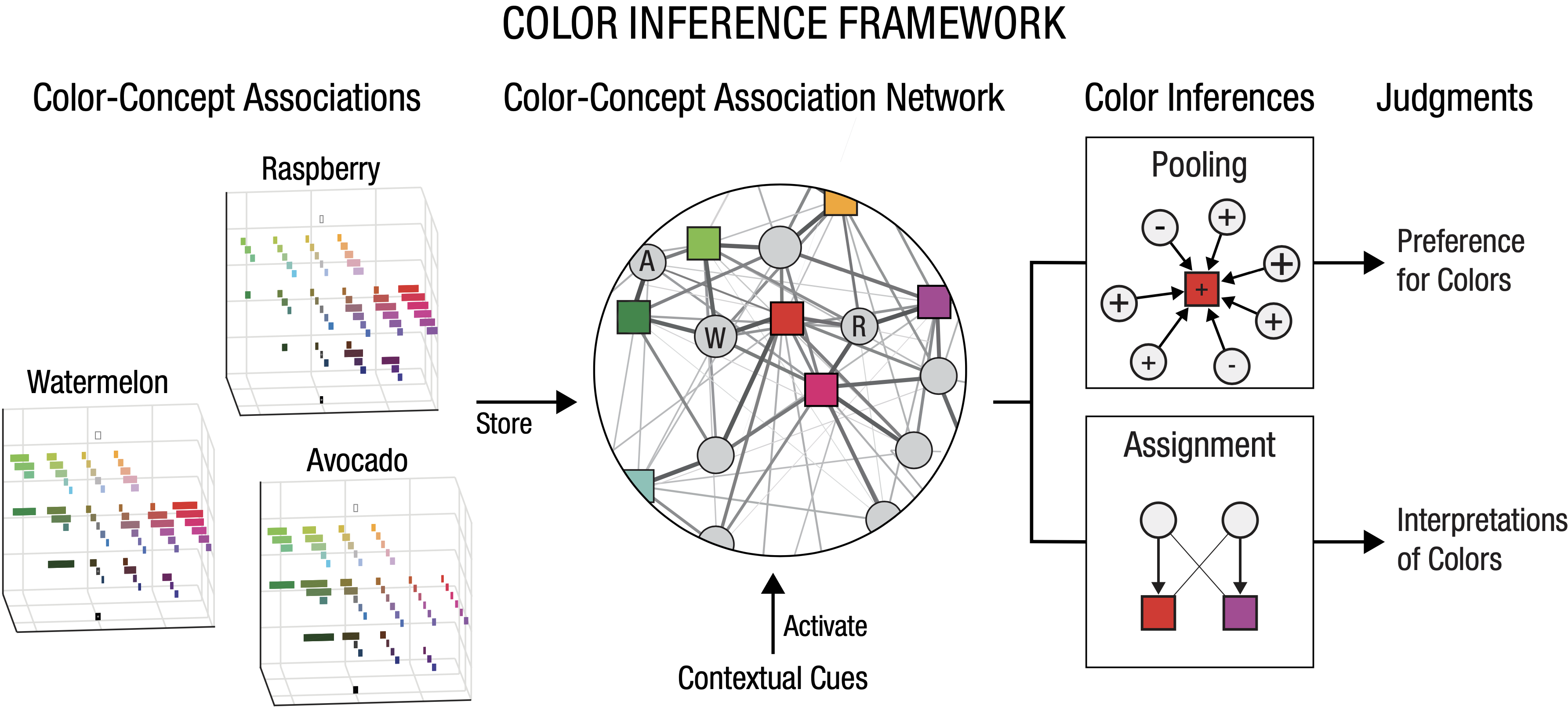
People have associations between colors and concepts that influence the way they interpret color meaning in information visualizations (e.g., charts, maps, diagrams). These associations are not limited to concrete objects (e.g., fruits, vegetables); even abstract concepts, like sleeping and driving, have systematic color-concept associations. However, color-concept associations and color meaning (color semantics) are not the same thing, and sometimes they conflict. This article describes an approach to understanding color semantics called the color inference framework. The framework shows how color semantics is highly flexible and context dependent, which makes color an effective medium for communication.
Reference: Schloss, K. B. (2024). Color semantics in human cognition. Current Directions in Psychological Science, 33, 1, 58-67. PDF

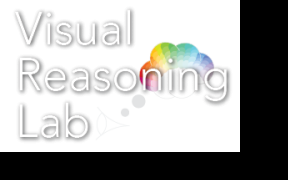
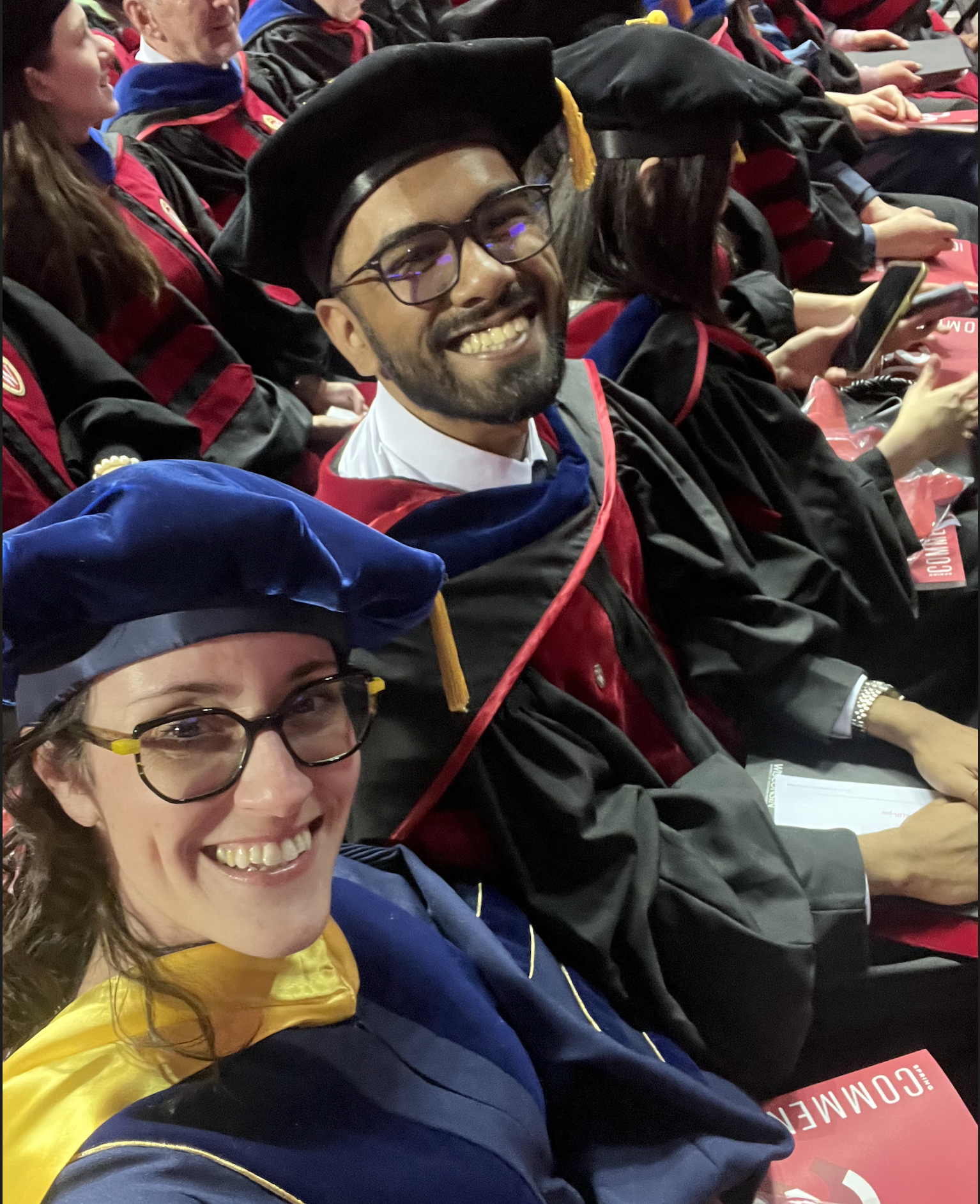
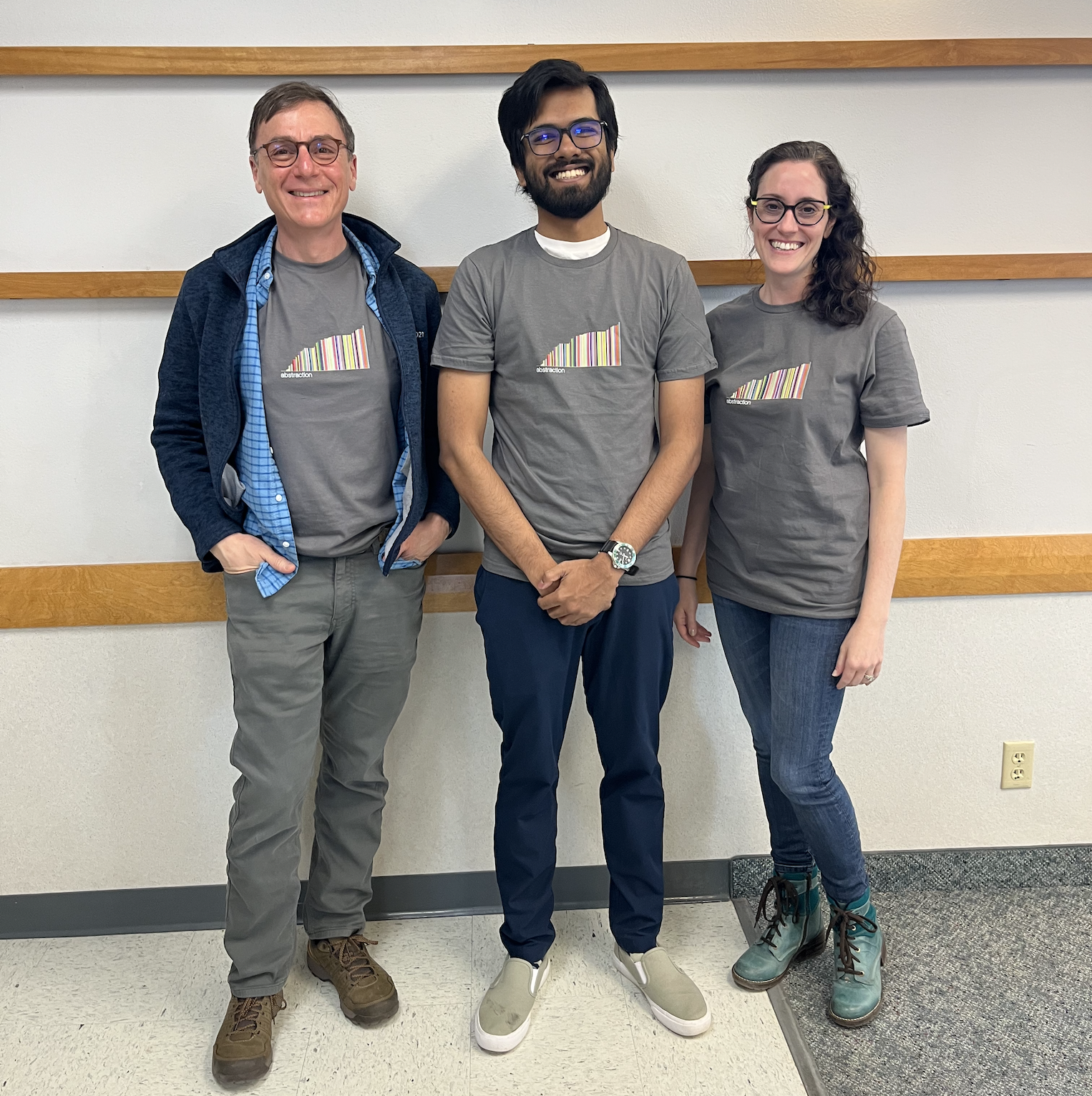 Dr. Kushin Mukherjee defended his dissertation on Cognitive Abstractions for Visual Communication, and now he is off to a postdoc at Stanford University! Congratulations Kushin, you did outstanding work at UW-Madison and we can’t wait to see where your career takes you!
Dr. Kushin Mukherjee defended his dissertation on Cognitive Abstractions for Visual Communication, and now he is off to a postdoc at Stanford University! Congratulations Kushin, you did outstanding work at UW-Madison and we can’t wait to see where your career takes you!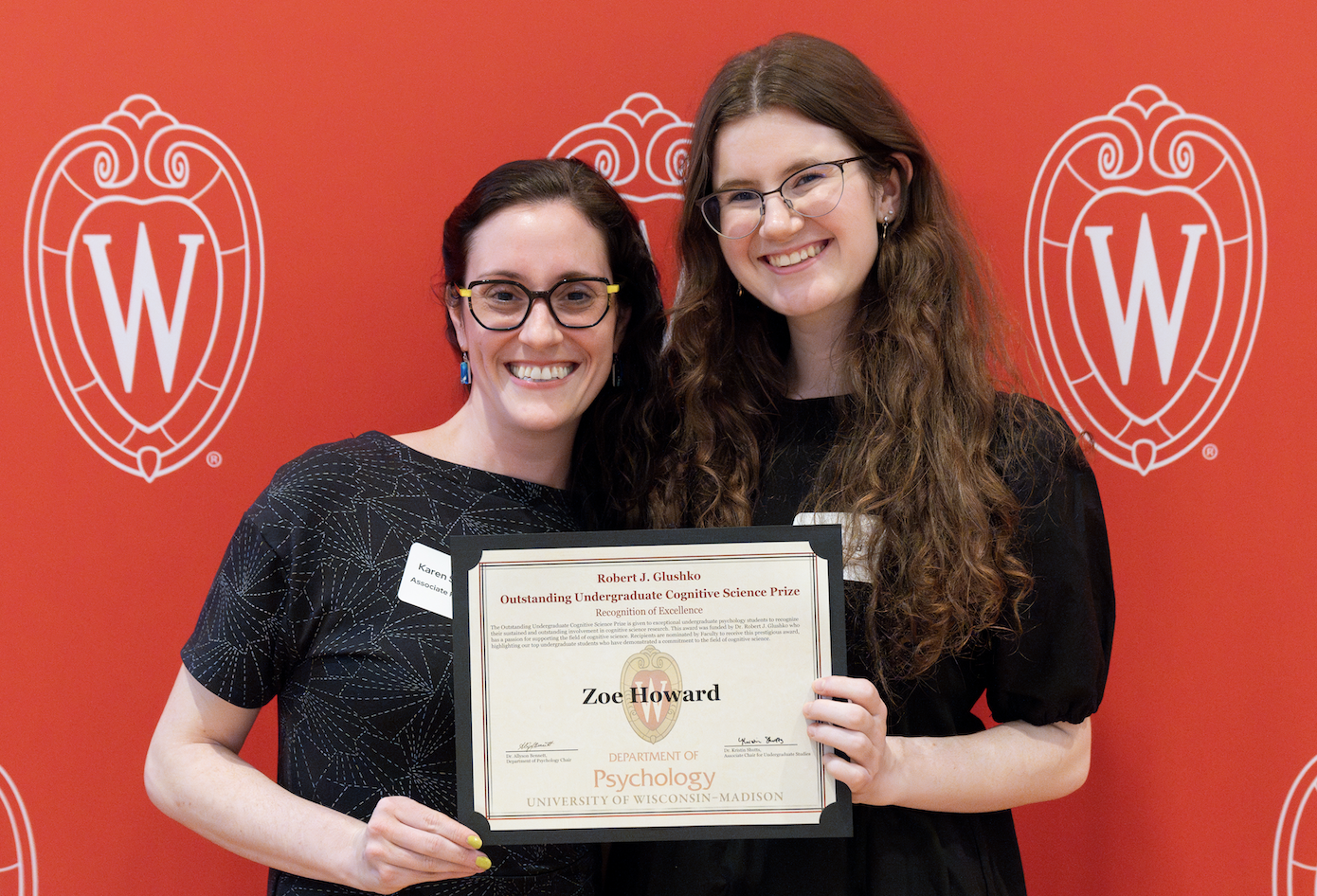 Congratulations to Zoe Howard for receiving a 2025 Glushko Outstanding Undergraduate Cognitive Scientist Prize from the Department of Psychology at UW-Madison!
Congratulations to Zoe Howard for receiving a 2025 Glushko Outstanding Undergraduate Cognitive Scientist Prize from the Department of Psychology at UW-Madison!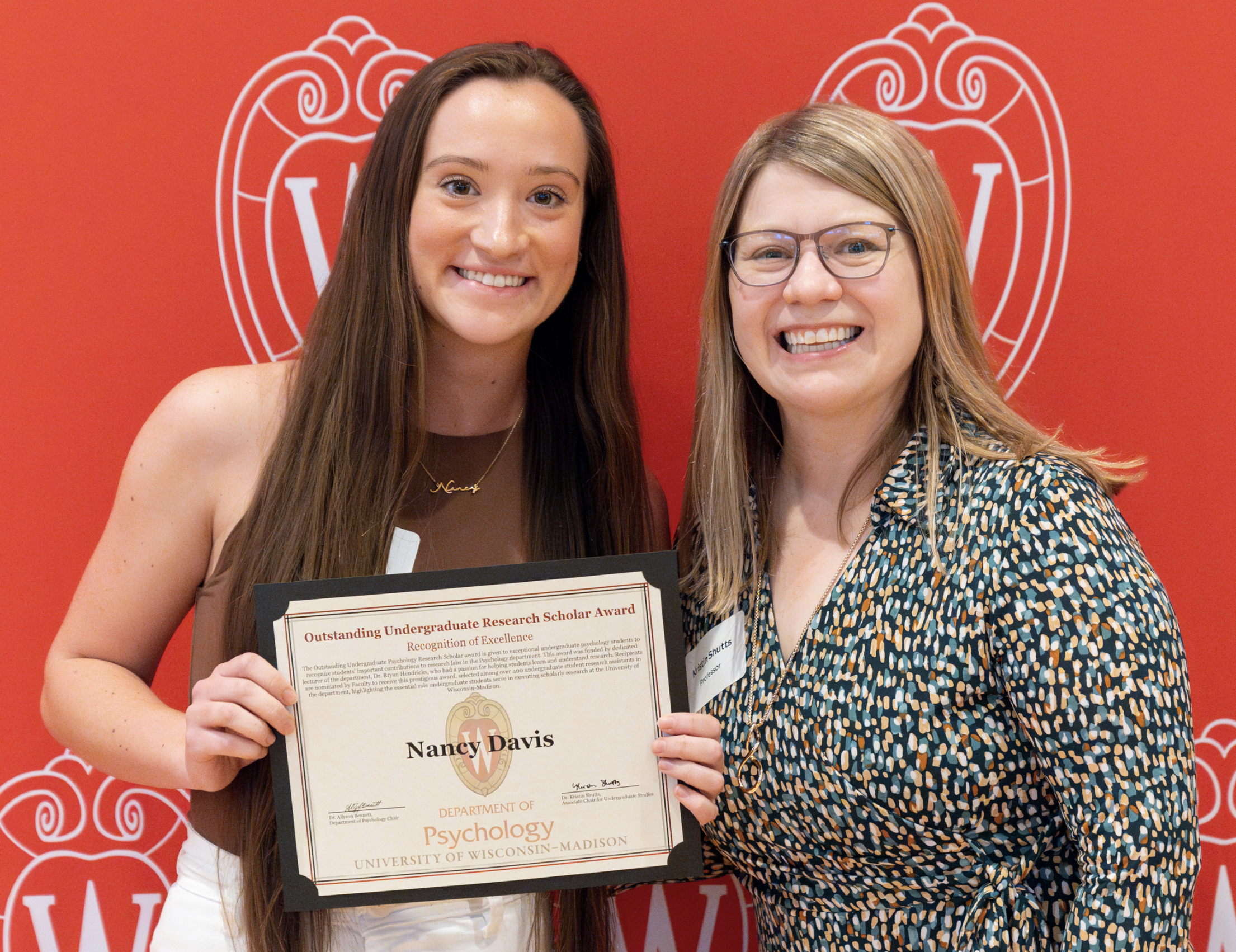 Congratulations to Nancy Davis (left) for receiving an Outstanding Undergraduate Research Scholar (OURS) Award from the UW-Madison Department of Psychology!
Congratulations to Nancy Davis (left) for receiving an Outstanding Undergraduate Research Scholar (OURS) Award from the UW-Madison Department of Psychology!
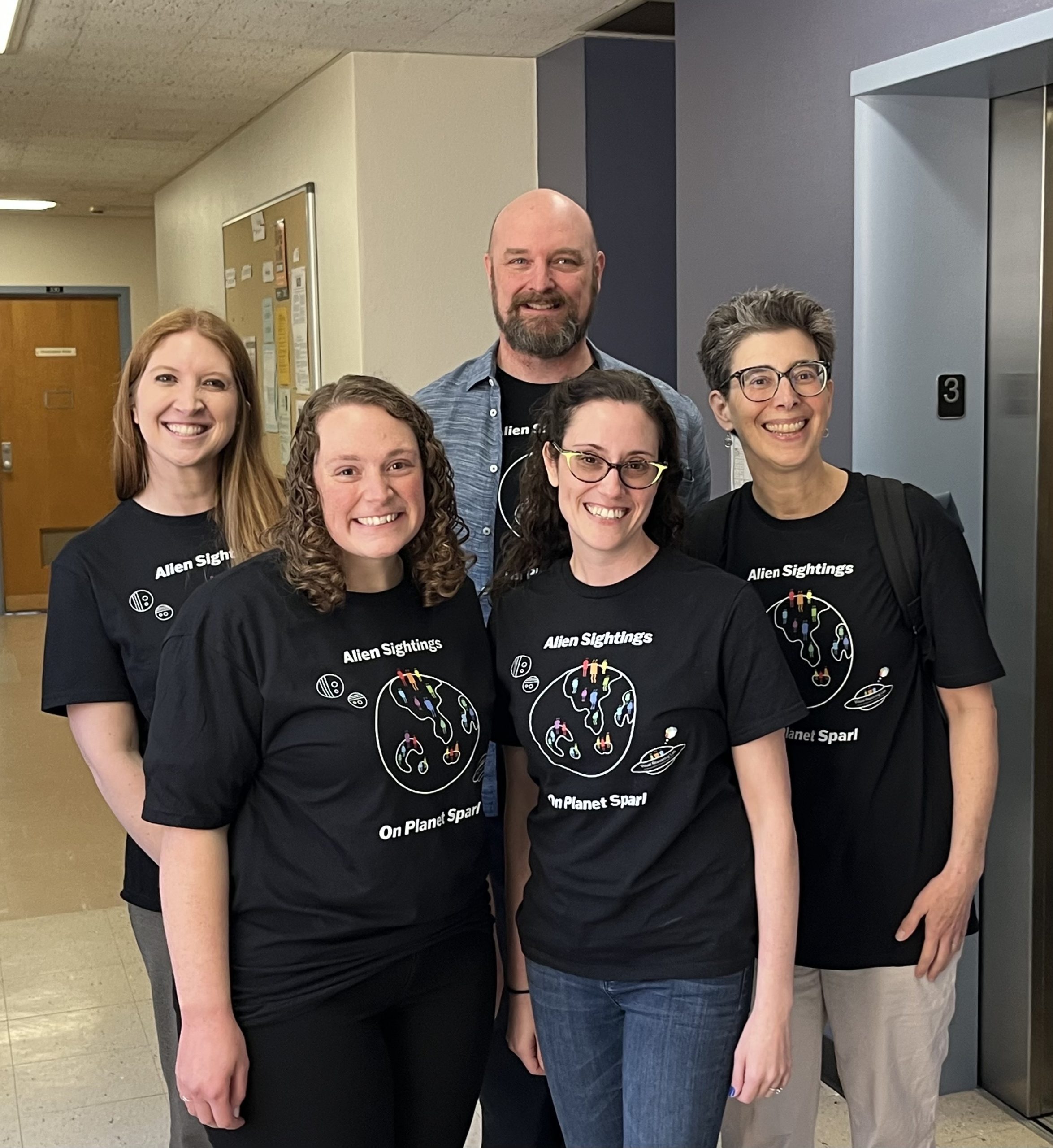 Dr. Melissa Schoenlein defended her dissertation on Effects of color category structure on learning and generalization of color-concept associations for novel concepts. Now, Melissa is off to start a faculty position in Psychology at High Point University!
Dr. Melissa Schoenlein defended her dissertation on Effects of color category structure on learning and generalization of color-concept associations for novel concepts. Now, Melissa is off to start a faculty position in Psychology at High Point University!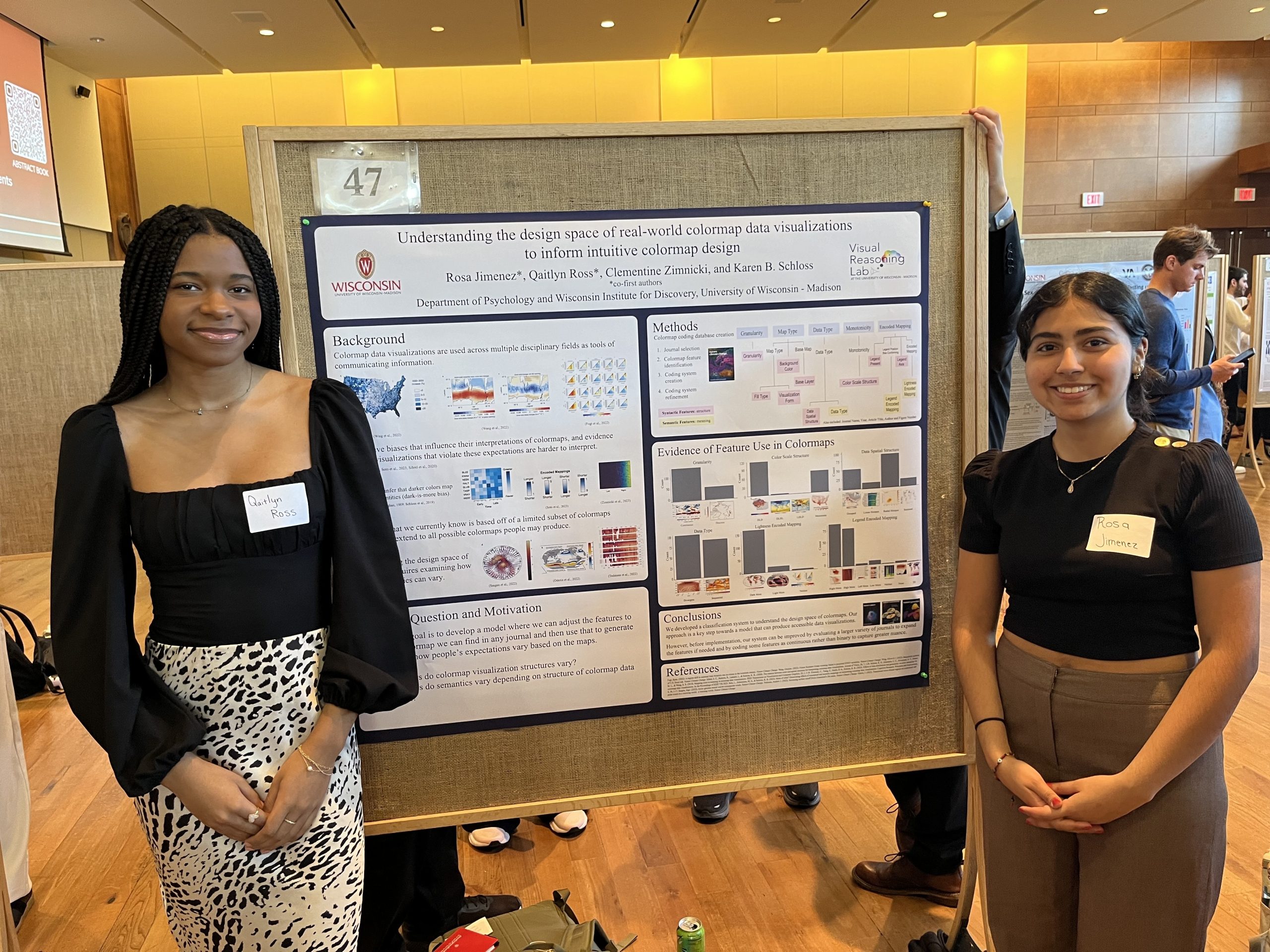 .
. 
 Melissa Schoenlein was awarded a 2023-2024 UW-Madison Capstone Teaching Award for her course Psychology of Information Visualization (Spring 2023)! This award recognizes dissertators at the end of their graduate program with an outstanding teaching record over the course of their UW–Madison tenure.
Melissa Schoenlein was awarded a 2023-2024 UW-Madison Capstone Teaching Award for her course Psychology of Information Visualization (Spring 2023)! This award recognizes dissertators at the end of their graduate program with an outstanding teaching record over the course of their UW–Madison tenure. Melina Mueller received a UW–Madison Department of Psychology Spring Undergraduate Travel Award to present her research at the 2024 meeting of the Vision Sciences Society:
Melina Mueller received a UW–Madison Department of Psychology Spring Undergraduate Travel Award to present her research at the 2024 meeting of the Vision Sciences Society: Congratulations to Zoe Howard for receiving a Hilldale Undergraduate/Faculty Research Fellowship! This fellowship provides research training and support for undergraduates to undertake their own research project in collaboration with UW–Madison faculty or research/instructional academic staff. This award will support Zoe’s honors thesis project investigating the effects of texture enlargements on texture semantics for scaled data visualizations.
Congratulations to Zoe Howard for receiving a Hilldale Undergraduate/Faculty Research Fellowship! This fellowship provides research training and support for undergraduates to undertake their own research project in collaboration with UW–Madison faculty or research/instructional academic staff. This award will support Zoe’s honors thesis project investigating the effects of texture enlargements on texture semantics for scaled data visualizations.